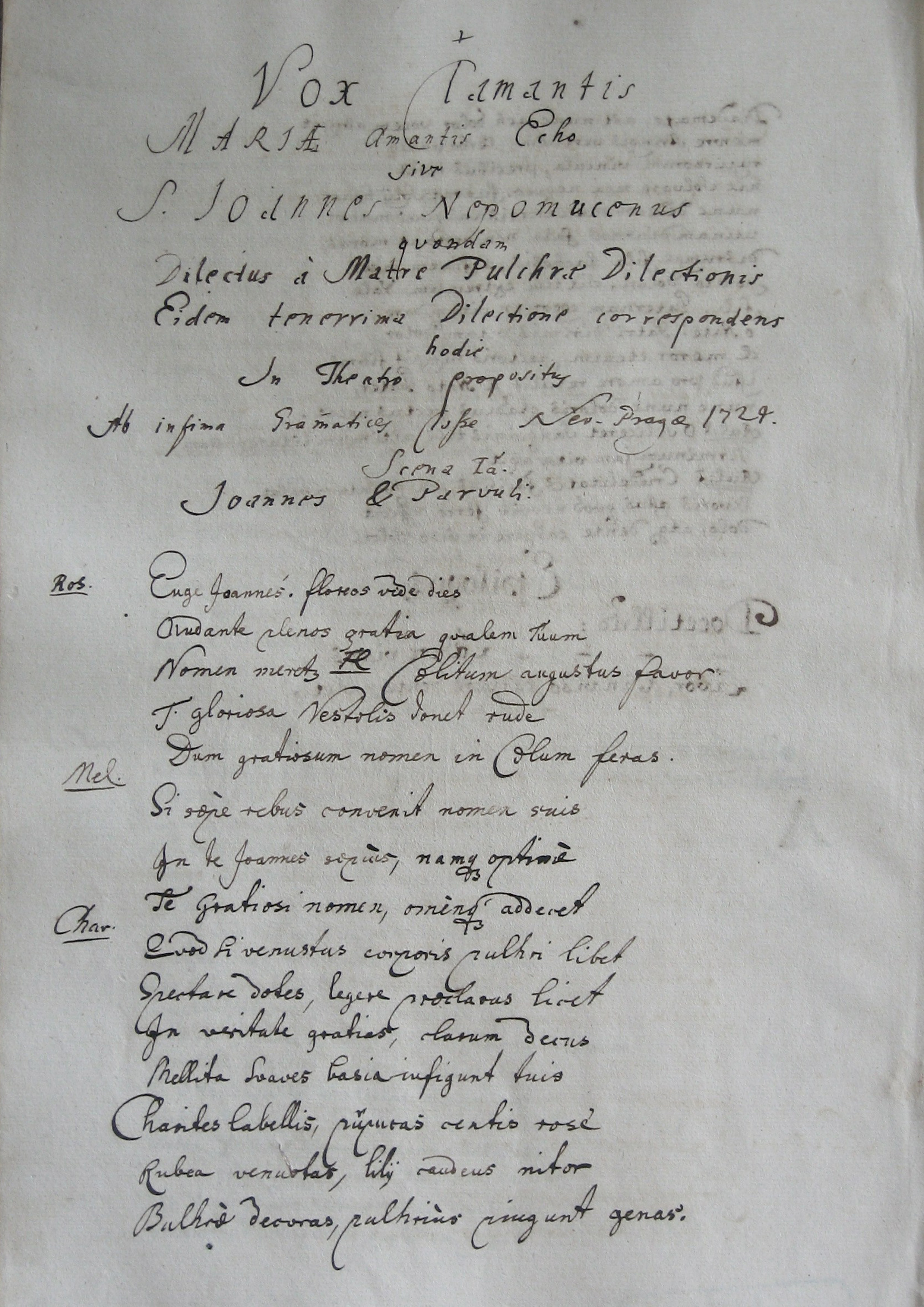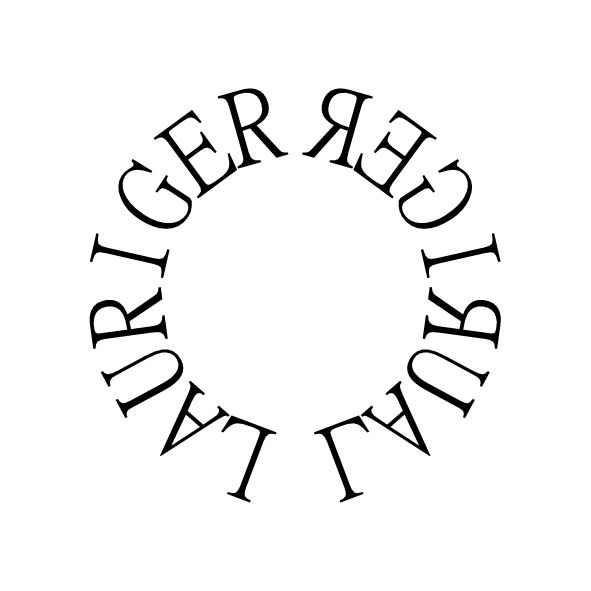Vox clamantis, Mariae amantis echo
- First performance: 1724, Prague – Nové Město, the lowest grammar class
- Author: Joannes Tiller, SJ (1701–1735)
The play The Voice of the Caller as an Echo of the Loving Mary is a fictional story from the childhood of John of Nepomuk. The plot is based on the stoling of the image - medallion of the Mother of God, which was given to John by his protector Mariophilus (admirer of Mary). John’s peer Rosilus is envious of both the gift and Mariophilus’ affection. He manages to steal the medallion from John but immediately loses it while escaping from a band of robbers. One of the robbers, however, repents and hangs the medallion on the branch of a tree, where it is discovered by John himself. The culprit confesses and repents, which allows the play to end in conciliation and universal celebration of Virgin Mary. While in the play with a similar theme - Angelus ad aras - John was above all an exemplary altar boy, now his deep devotion to Virgin Mary is emphasized. The Marian topic is reflected in the character’s dialogues (most of John’s lines are addressed to the Virgin), names (Mariophilus), respect for the Virgin is shared by most characters (including one of the robbers) etc. More info in Czech
Text
[Joannes Tiller]: Vox clamantis, Mariae amantis echo sive S. Joannes Nepomucenus, qvondam dilectus a Matre pulchrae dilectionis, eidem tenerrima dilectione correspondens. Hodie in theatro propositus ab infima gramatices classe Neo-Pragae 1724 National archives CR, fond Stará manipulace, sign. J 20/17/18, box 998, f. 299v–308v
Synopsis
Not preserved
Kateřina Bobková-Valentová – Alena Bočková – Magdaléna Jacková – Martin Bažil – Eva Pauerová – Jan Zdichynec – Zdeněk Žalud: Sv. Jan Nepomucký na jezuitských školních scénách. Praha: Academia, 2015. (= Theatrum Neolatinum. Latinské divadlo v českých zemích, 1.), p. 140-189.
Bibliography
Alena Bočková: From sanctulus to sacer. Suggested Typology of Jesuit School Plays Featuring St. John of Nepomuk in the Czech Province, Acta Universitatis Carolinae – Philologica, Graecolatina Pragensia 25, 2015, p. 113–133.


